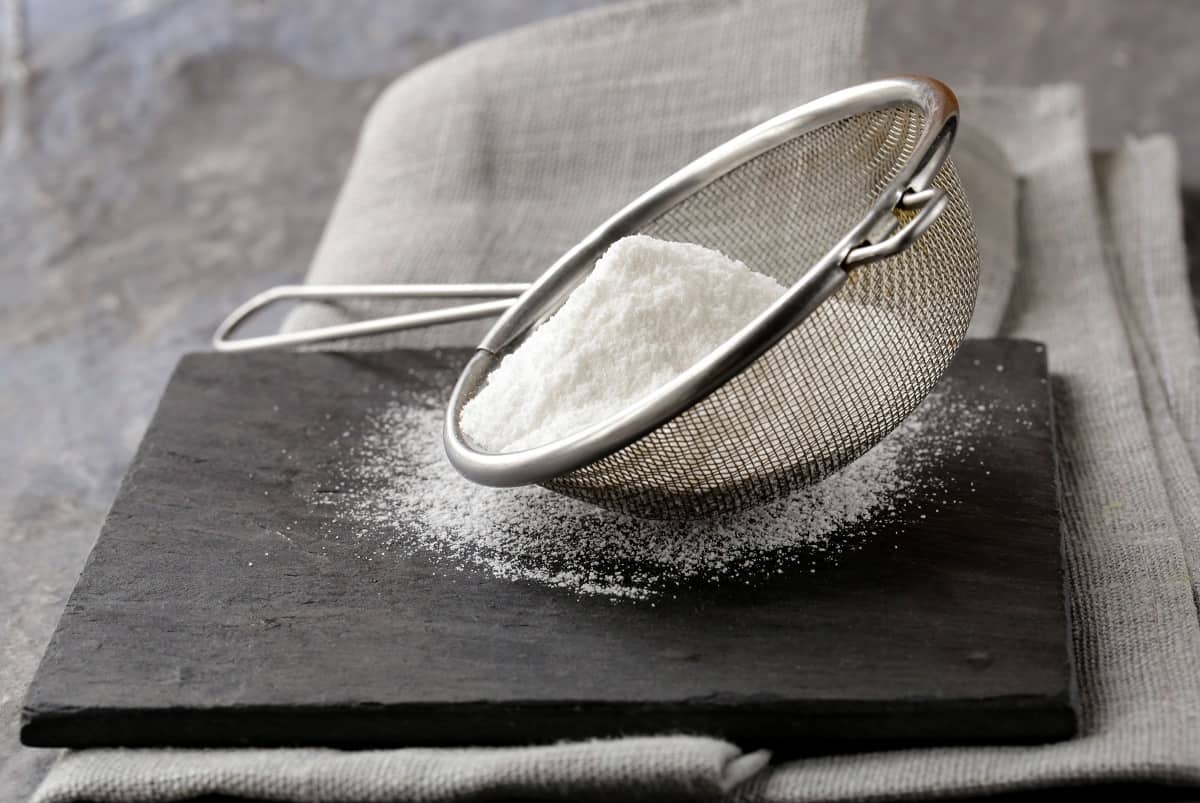

Articles
How To Store Powdered Sugar Long Term
Modified: December 7, 2023
Learn how to store powdered sugar for long term use. Read our informative articles for expert tips and tricks.
(Many of the links in this article redirect to a specific reviewed product. Your purchase of these products through affiliate links helps to generate commission for Storables.com, at no extra cost. Learn more)
Introduction
When it comes to stocking up our pantry with essential baking ingredients, powdered sugar is often at the top of the list. Whether you use it for making frosting, dusting desserts, or adding sweetness to your favorite recipes, having a stash of powdered sugar on hand is always handy.
But what happens when you buy powdered sugar in bulk or have some leftover from a baking project? How do you ensure that it remains fresh and usable for a long time? Proper storage is the key to preserving the quality and extending the shelf life of powdered sugar.
In this article, we will explore the importance of proper storage for powdered sugar and provide you with valuable tips on how to store it long term. By following these guidelines, you can avoid clumping, moisture absorption, and other issues that can affect the quality of powdered sugar.
Key Takeaways:
- Proper storage of powdered sugar is crucial to prevent clumping, moisture absorption, and rancidity, ensuring its freshness and usability for up to two years.
- Choosing the right airtight container, following recommended storage conditions, and periodic inspection can help extend the shelf life of powdered sugar, maintaining its quality for baking needs.
Read more: How To Store Sugar Long Term
Importance of Proper Storage for Powdered Sugar
Proper storage of powdered sugar is crucial for maintaining its freshness, texture, and flavor. When stored correctly, powdered sugar can have a shelf life of up to two years. However, if not stored properly, it can develop clumps, absorb moisture, and even go rancid.
One of the main reasons why proper storage is important is to prevent clumping. Powdered sugar is notorious for clumping together, especially when exposed to moisture. These clumps can be frustrating to deal with, as they can be difficult to break apart and dissolve. By storing powdered sugar properly, you can minimize the chances of clumping and ensure that it remains free-flowing, making it easier to measure and use in your recipes.
In addition to clumping, moisture absorption is another concern when it comes to storing powdered sugar. The high sugar content makes powdered sugar prone to absorbing moisture from the air. When moisture is absorbed, the sugar can become lumpy, affecting its texture and quality. Moisture can also create favorable conditions for the growth of mold and bacteria, putting the powdered sugar at risk of spoilage.
Furthermore, exposure to air can lead to the oxidation of powdered sugar, causing it to go rancid. Rancid powdered sugar can have an off-putting smell and taste, rendering it unsuitable for use in your recipes. By storing powdered sugar in airtight containers, you can protect it from oxidation and extend its shelf life.
Proper storage not only ensures the longevity of powdered sugar but also helps to maintain its flavor. When exposed to air, powdered sugar can absorb odors and flavors from its surroundings, compromising its taste. By storing it in airtight containers away from strong-smelling ingredients, you can preserve the original flavor of the powdered sugar.
In summary, proper storage for powdered sugar is essential to prevent clumping, moisture absorption, rancidity, and flavor contamination. By following the right storage practices, you can ensure that your powdered sugar remains fresh, free-flowing, and suitable for use in your baking endeavors.
Factors Affecting the Shelf Life of Powdered Sugar
The shelf life of powdered sugar can be influenced by several factors. Understanding these factors is crucial for proper storage and ensuring that your powdered sugar remains fresh and usable for an extended period. Here are some of the key factors that can affect the shelf life of powdered sugar:
- Moisture: Moisture is one of the biggest enemies of powdered sugar. The high sugar content in powdered sugar makes it hygroscopic, meaning it readily absorbs moisture from the environment. Exposure to moisture can cause clumping, texture changes, and increase the risk of spoilage. It is vital to store powdered sugar in a dry environment and protect it from humidity.
- Temperature: Temperature plays a significant role in the shelf life of powdered sugar. High temperatures can accelerate the breakdown of the sugar molecules, leading to discoloration, texture changes, and loss of flavor. It is best to store powdered sugar in a cool and dry place, away from direct sunlight and heat sources like stovetops or ovens.
- Air Exposure: Exposure to air can lead to the oxidation of powdered sugar, causing it to go rancid. The oxidation process can negatively impact the flavor and quality of powdered sugar, making it unsuitable for use. Storing powdered sugar in airtight containers is essential to protect it from air exposure and maintain its freshness.
- Contamination: Contamination can also affect the shelf life of powdered sugar. When stored in the vicinity of strong-smelling ingredients or substances with strong flavors, powdered sugar can absorb odors and flavors, compromising its taste. It is crucial to store powdered sugar away from aromatic spices, pungent foods, or cleaning chemicals to avoid flavor contamination.
- Quality of Packaging: The quality of the packaging used to store powdered sugar can impact its shelf life. If the packaging is not airtight or has any defects, it can allow air, moisture, and contaminants to enter, leading to spoilage. It is essential to choose high-quality containers or resealable bags specifically designed for food storage.
By understanding and mitigating these factors, you can significantly extend the shelf life of your powdered sugar. Properly storing it in a cool, dry, and airtight container, away from moisture, air exposure, and contaminants, will help to maintain its quality and ensure that it remains fresh and usable for a longer period.
Choosing the Right Container for Storing Powdered Sugar
When it comes to storing powdered sugar, selecting the right container is crucial for maintaining its freshness and quality. The container you choose should provide airtight protection, be made from food-safe materials, and be easy to use and access. Here are some factors to consider when choosing the right container for storing powdered sugar:
- Airtightness: The container you select should have an airtight seal to prevent air and moisture from entering. Airtight containers help to maintain the freshness of powdered sugar and protect it from clumping, moisture absorption, and oxidation. Look for containers with tight-fitting lids or those that come with built-in seals or locking mechanisms to ensure a secure closure.
- Material: The chosen container should be made from food-safe materials that will not leach any harmful chemicals into the powdered sugar. Glass jars, BPA-free plastic containers, and stainless steel can be good options. Avoid using containers made from reactive metals or materials that may transfer odors or flavors to the powdered sugar.
- Size and Accessibility: Consider the quantity of powdered sugar you plan to store and choose a container size accordingly. It should have enough capacity to hold the desired amount of powdered sugar without leaving too much empty space. Additionally, ensure that the container is easy to open and close, allowing for convenient access to the powdered sugar whenever needed.
- Transparency: Opting for a transparent or translucent container has its advantages. It allows you to easily see the contents and monitor the condition of the powdered sugar. This way, you can quickly detect any signs of clumping, moisture, or spoilage without needing to open the container.
- Easy to Clean: Consider the ease of cleaning when choosing a container. Containers with wide openings or removable lids make it easier to clean thoroughly and remove any residue or build-up that may accumulate over time.
Remember to thoroughly clean and dry your chosen container before transferring powdered sugar into it. Any residual moisture or contaminants in the container can negatively affect the shelf life of the powdered sugar.
By selecting the right container that ensures airtight protection, safety, convenience, and easy access, you can effectively store powdered sugar and keep it fresh and usable for an extended period.
Steps to Store Powdered Sugar Long Term
Properly storing powdered sugar is essential to maintain its freshness and extend its shelf life. Follow these steps to store powdered sugar long term:
- Choose the Right Container: Select an airtight container made of food-safe material, such as glass, BPA-free plastic, or stainless steel. Make sure the container is clean and dry before use.
- Transfer the Powdered Sugar: Transfer the powdered sugar from its original packaging to the chosen airtight container. Pour it carefully to avoid any spills or mess.
- Seal the Container: Ensure that the lid or closure of the container is tightly sealed to prevent air and moisture from entering.
- Label the Container: It’s a good practice to label the container with the date of storage. This way, you can keep track of the powdered sugar’s freshness and know when it’s time to replenish your stock.
- Find the Perfect Storage Location: Store the powdered sugar in a cool, dry, and dark place, away from direct sunlight, heat sources, and humidity. Ideally, a pantry or kitchen cabinet is a suitable location.
- Avoid Temperature Fluctuations: Avoid placing the powdered sugar container near appliances that generate heat, such as ovens, stovetops, or microwaves. Keep it away from areas with extreme temperature fluctuations, such as near windows or vents.
- Maintain Proper Hygiene: Before using the powdered sugar, ensure that your hands and any utensils used are clean and dry to minimize contamination.
- Re-Seal After Use: After each use, promptly re-seal the container to maintain its airtight seal and protect the powdered sugar from air and moisture.
- Check for Clumping or Moisture: Occasionally inspect the powdered sugar for any signs of clumping or moisture absorption. If clumps or moisture are present, gently break apart the clumps and transfer the powdered sugar to a new, dry container.
- Rotate Stock: If you frequently use powdered sugar, rotate your stock by storing older containers towards the front and placing newly purchased powdered sugar towards the back. This helps ensure that older powdered sugar gets used first, preventing it from going stale or losing quality.
By following these simple steps, you can effectively store powdered sugar long term, preserving its quality, flavor, and texture for the duration of its shelf life.
Store powdered sugar in an airtight container in a cool, dry place, away from heat and sunlight. Adding a few marshmallows to the container can help prevent clumping.
Read more: How To Store Powdered Eggs Long Term
Recommended Storage Conditions for Powdered Sugar
To ensure the longevity of powdered sugar and maintain its freshness and quality, it is important to store it under proper conditions. Here are the recommended storage conditions for powdered sugar:
- Cool Temperature: Store powdered sugar in a cool environment with a temperature range between 50°F and 70°F (10°C and 21°C). Avoid exposing it to high temperatures, as heat can degrade the quality and texture of the sugar.
- Dry Environment: Moisture is one of the primary culprits for clumping and spoilage in powdered sugar. Always store it in a dry environment with humidity levels below 50%. Avoid storing it near the sink, dishwasher, or any other areas prone to moisture accumulation.
- Avoid Sunlight: Protect powdered sugar from direct sunlight and UV rays, as they can accelerate the degradation process and cause changes in flavor and texture.
- Airtight Container: Use an airtight container that provides a secure seal to prevent air from entering. This helps to preserve the freshness of the powdered sugar and protect it from moisture and contaminants.
- Away from Strong Odors: Keep powdered sugar away from strong-smelling substances like spices, cleaning agents, or aromatic foods. Powdered sugar can absorb odors easily, which can impact its flavor and quality.
- Dark Storage Area: Store powdered sugar in a dark cabinet or pantry. Light exposure can result in discoloration and loss of quality over time.
By adhering to these recommended storage conditions, you can maximize the shelf life of powdered sugar and maintain its freshness, texture, and flavor. It is important to note that while powdered sugar can last for up to two years when stored properly, it is still beneficial to periodically check for any signs of clumping, moisture, or spoilage to ensure its usability.
Remember to always use clean, dry utensils when handling powdered sugar to avoid introducing moisture or contaminants. With the right storage conditions and proper handling, your powdered sugar will be ready to add a touch of sweetness to your baking creations whenever you need it!
Tips for Extending the Shelf Life of Powdered Sugar
To ensure that your powdered sugar stays fresh, clump-free, and of the highest quality, consider these tips for extending its shelf life:
- Proper Storage: Follow the recommended storage conditions mentioned earlier, including storing in a cool, dry, and dark place in an airtight container.
- Keep Away from Moisture: Moisture is the enemy of powdered sugar. Avoid storing it near the sink or in areas with high humidity. Ensure the container is tightly sealed after each use.
- Avoid Contamination: Keep powdered sugar away from strong-smelling substances to prevent flavor contamination. Store it separately from spices, cleaning agents, and pungent foods.
- No Double-Dipping: Avoid using wet spoons or measuring cups when scooping powdered sugar. This can introduce moisture and increase the risk of clumping. Instead, use clean, dry utensils.
- Rotate Stock: If you have multiple containers of powdered sugar, rotate them to use the older ones first. This helps prevent any sugar from sitting unused for too long, reducing the chances of it going stale or losing quality.
- Measure Before Sifting: If a recipe requires sifted powdered sugar, measure it before sifting. Exposing the entire batch to air during sifting can lead to moisture absorption and clumping.
- Vacuum Sealing: If you have a vacuum sealer, consider using it to remove excess air from the powdered sugar container before sealing. This can help further prevent moisture and other contaminants from entering.
- Add Desiccant Packs: To absorb any residual moisture, place food-grade desiccant packs in the powdered sugar container. These packs help maintain dryness and prevent clumping.
- Regular Inspection: Periodically check the powdered sugar for any signs of clumping, moisture, or spoilage. If you notice any issues, transfer the sugar to a new, dry container.
- Use within Shelf Life: While powdered sugar can last for an extended period, it is best to use it within its recommended shelf life, typically up to two years. Fresher powdered sugar often yields better results in recipes.
By following these tips, you can effectively extend the shelf life of your powdered sugar, ensuring that it remains fresh, clump-free, and ready to enhance your baking creations.
Remember that even with proper storage, powdered sugar may gradually lose its quality over time. It’s always a good practice to perform a sensory inspection before using it in recipes, checking for any off smells, discoloration, or textural changes.
Checking for Spoilage or Rancidity in Powdered Sugar
To ensure the powdered sugar you’re using is still fresh and of good quality, it’s essential to periodically check for signs of spoilage or rancidity. Here are some key indications to look out for:
- Visual Inspection: Examine the powdered sugar for any discoloration, such as yellowing or browning. Discoloration can be an indicator of prolonged exposure to air, moisture, or heat, and it can result in a loss of flavor and quality.
- Odor Check: Take a whiff of the powdered sugar, paying attention to any unusual or off-putting smells. If the sugar has a strange or funky odor, it may indicate spoilage or rancidity.
- Texture Examination: Check the texture of the powdered sugar. If you notice any clumps, lumps, or significant changes in texture, it could be a sign of moisture absorption or inadequate storage conditions.
- Taste Test: While powdered sugar is typically used as a sweetener and rarely consumed on its own, you can taste a small amount to gauge its flavor. If it has a stale or rancid taste, it’s a clear indication that the powdered sugar has gone bad.
In the unfortunate event that you detect any of these signs of spoilage or rancidity, it is best to discard the powdered sugar. Using spoiled powdered sugar can negatively impact the taste and quality of your recipes.
Remember, proper storage techniques can help prevent spoilage and rancidity, so always store powdered sugar in a cool, dry, and airtight container, away from moisture, heat, and strong odors. Regularly inspect your powdered sugar to catch any issues early on and maintain its freshness and quality.
By staying vigilant and following these guidelines, you can ensure that you’re working with fresh, high-quality powdered sugar for all your baking needs.
Conclusion
Proper storage of powdered sugar is essential for preserving its freshness, texture, and flavor. By following the recommended storage conditions, choosing the right container, and implementing best practices, you can extend the shelf life of powdered sugar and ensure its usability in your recipes for an extended period.
Remember to store powdered sugar in a cool and dry place, away from direct sunlight and humidity. Use airtight containers made of food-safe materials to protect the powdered sugar from air exposure and moisture absorption. Avoid storing it near strong-smelling substances that can contaminate its flavor.
Regularly inspect the powdered sugar for clumping, moisture, or spoilage, and discard any sugar that shows signs of deterioration. Following good hygiene practices and using dry utensils when handling powdered sugar can help prevent contamination and maintain its quality.
By implementing these tips and storage methods, you can ensure that your powdered sugar remains fresh, free-flowing, and ready to enhance your baked goods for an extended period. The result will be delicious treats that delight your taste buds and impress your family and friends.
So, the next time you stock up on powdered sugar or have leftover from a baking project, remember to store it properly and enjoy the convenience of having high-quality powdered sugar at your fingertips whenever you need it.
Frequently Asked Questions about How To Store Powdered Sugar Long Term
Was this page helpful?
At Storables.com, we guarantee accurate and reliable information. Our content, validated by Expert Board Contributors, is crafted following stringent Editorial Policies. We're committed to providing you with well-researched, expert-backed insights for all your informational needs.
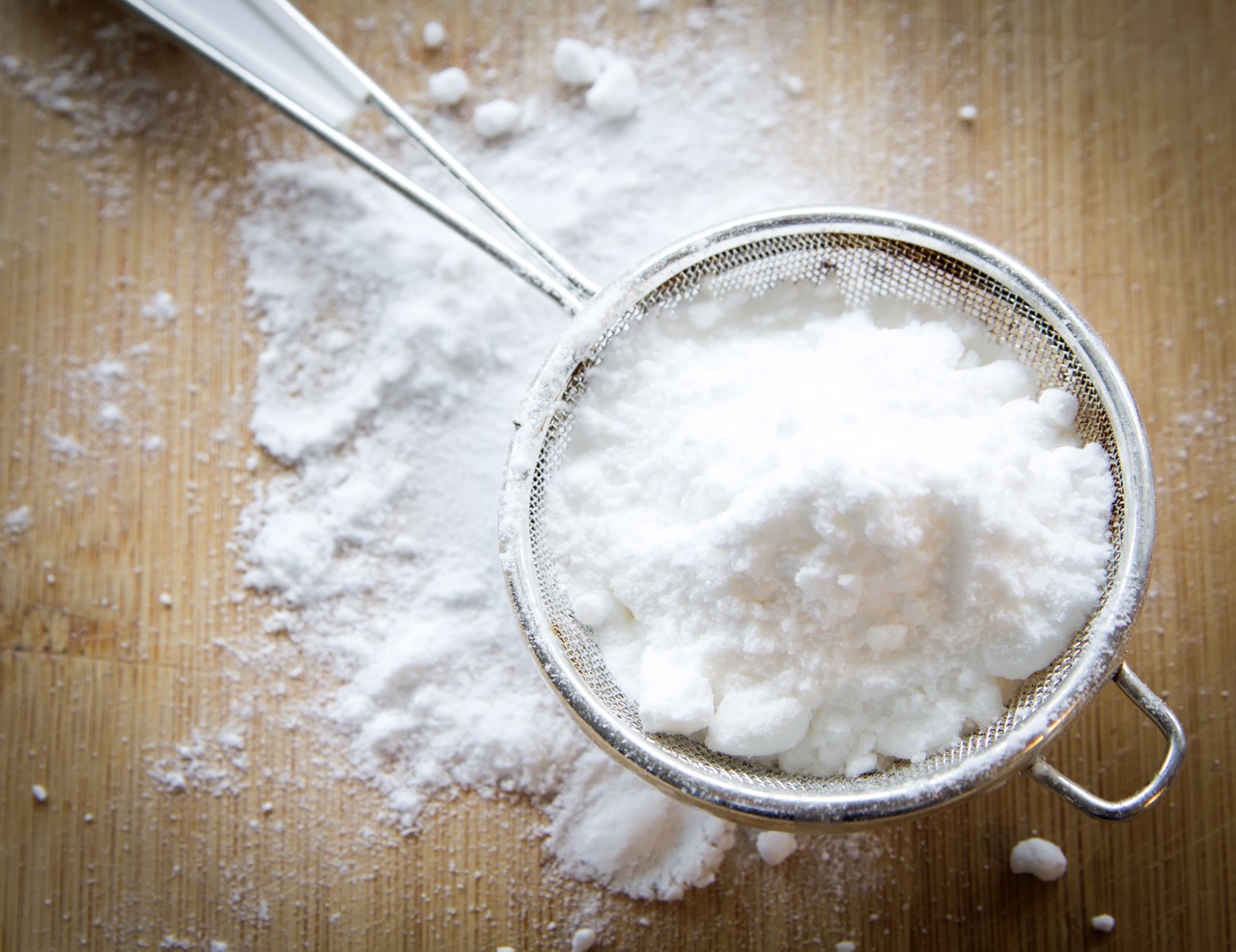
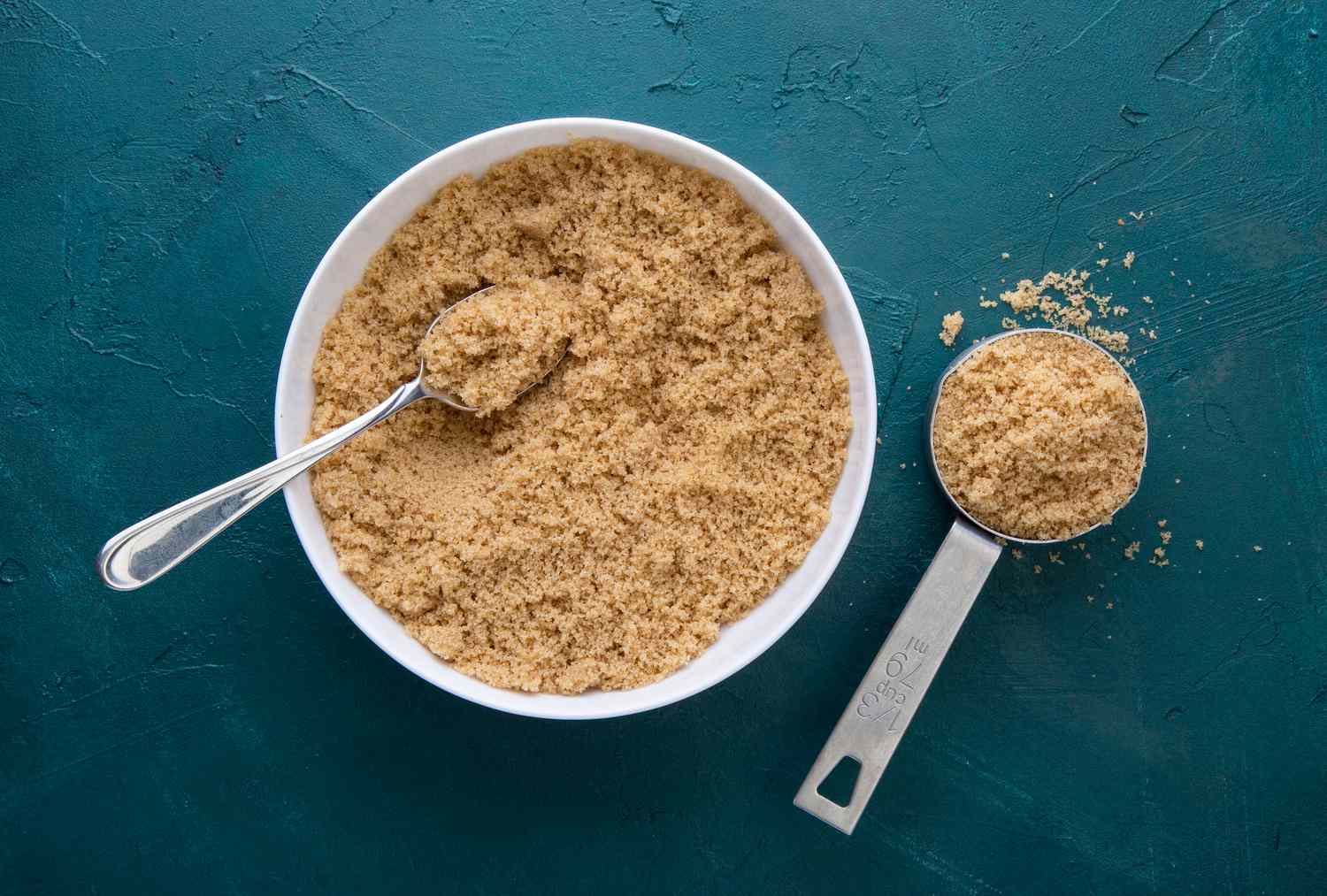
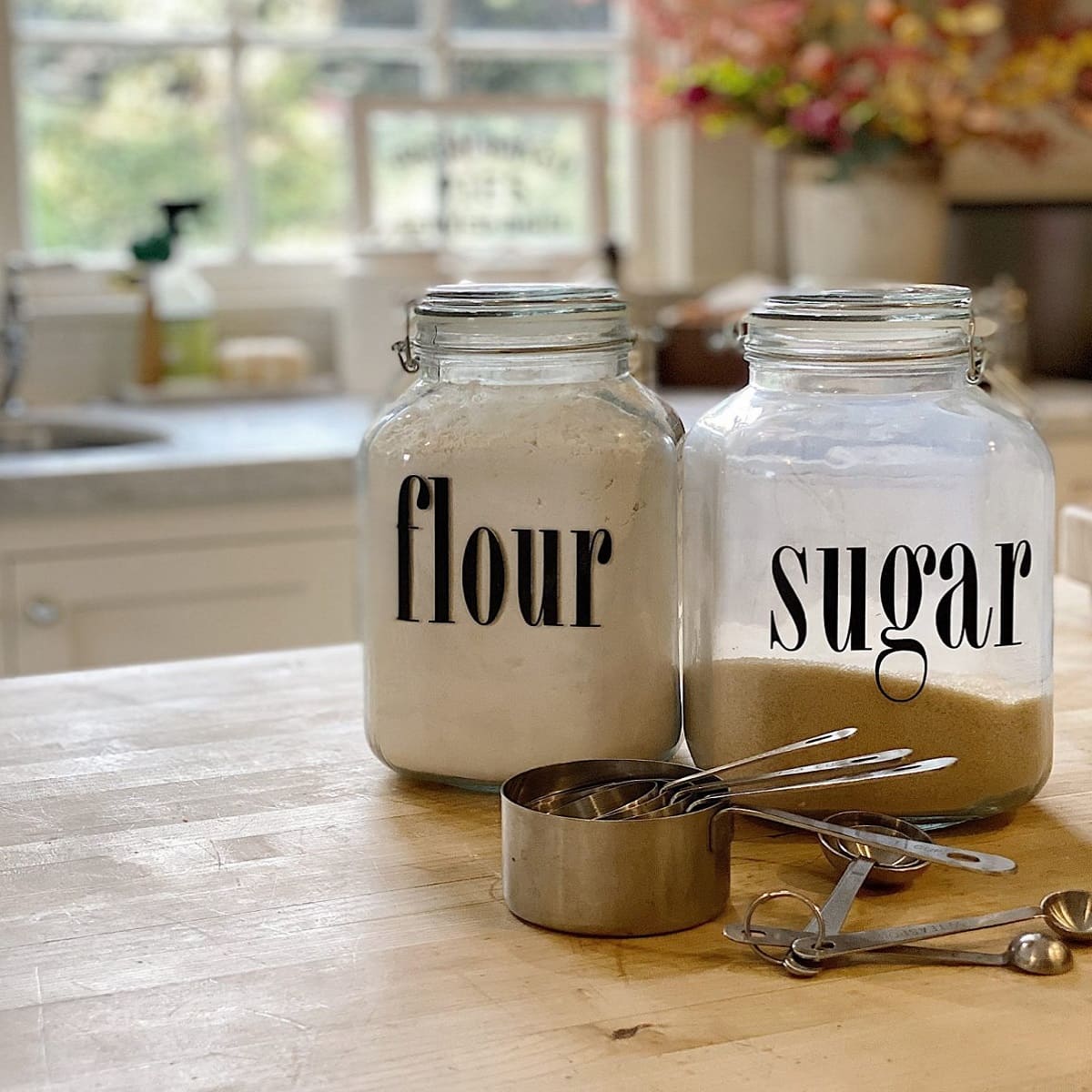
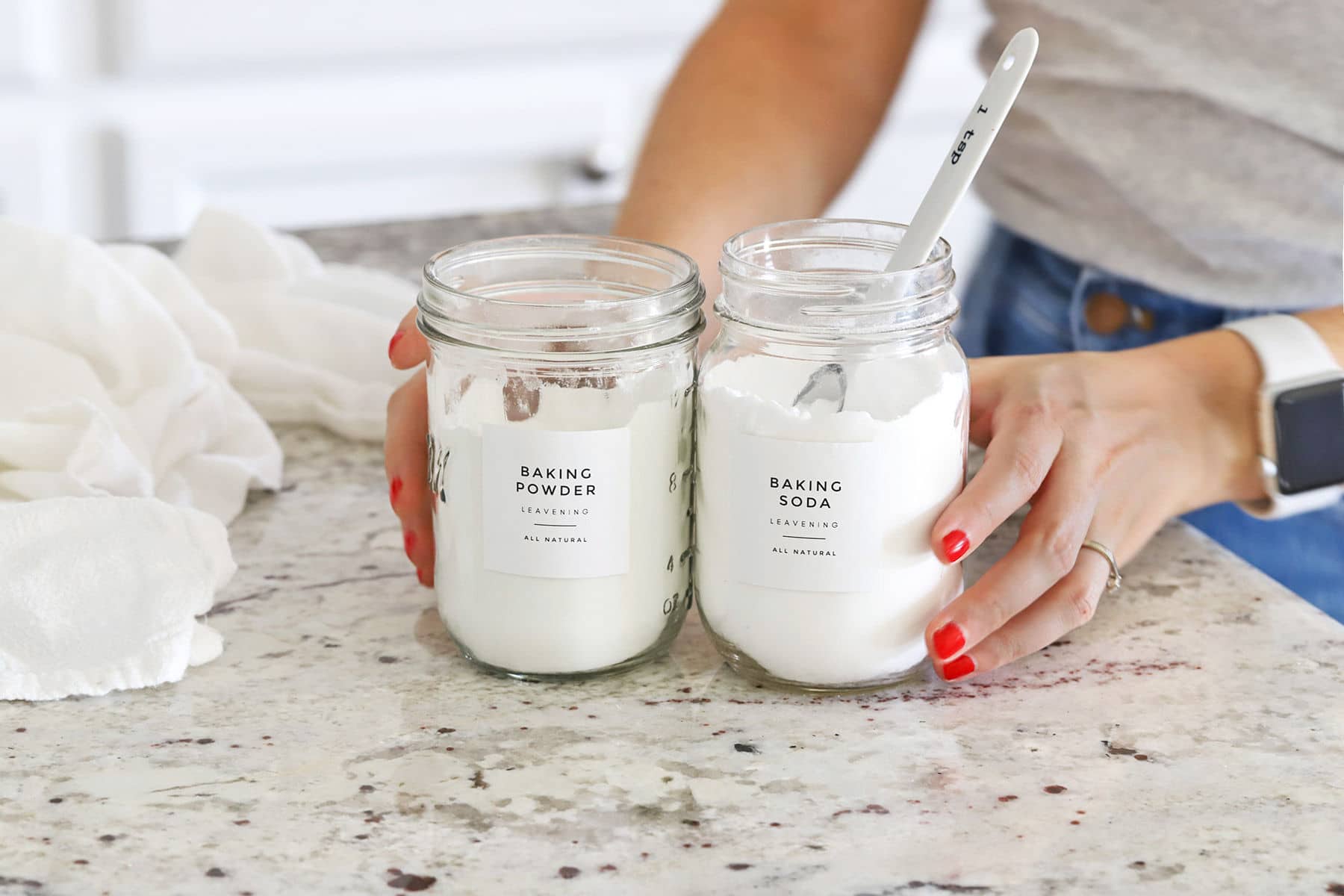
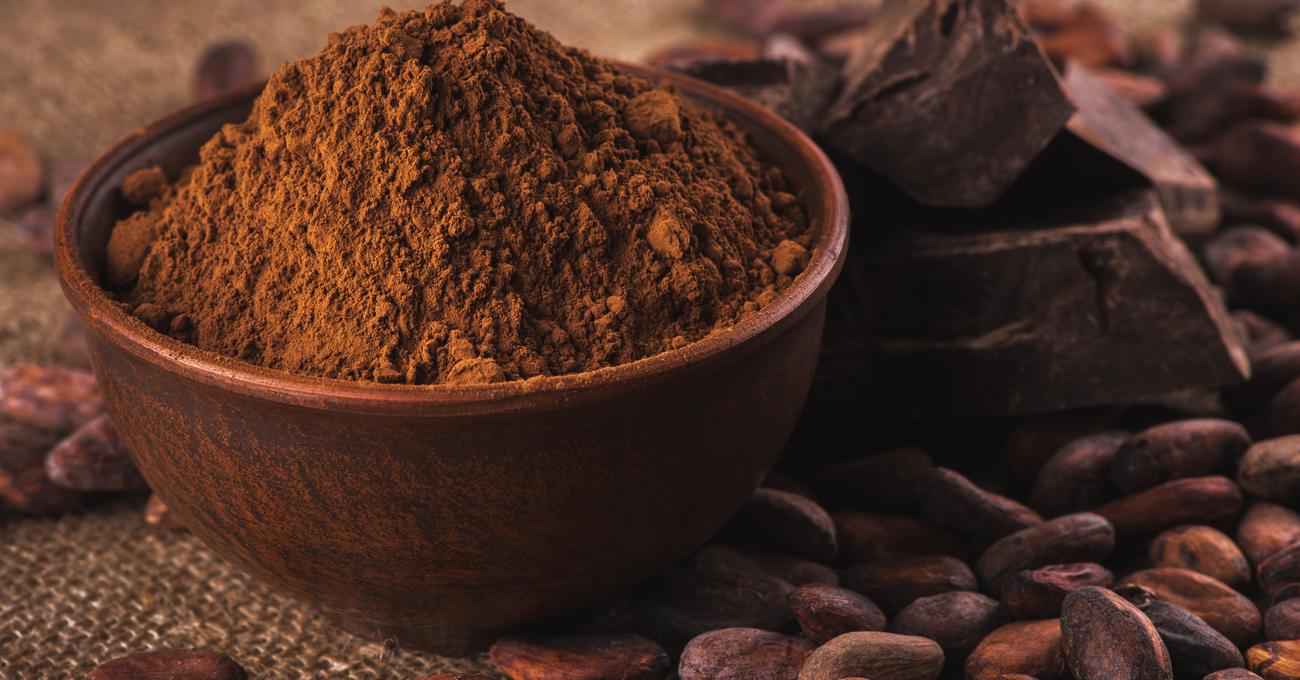
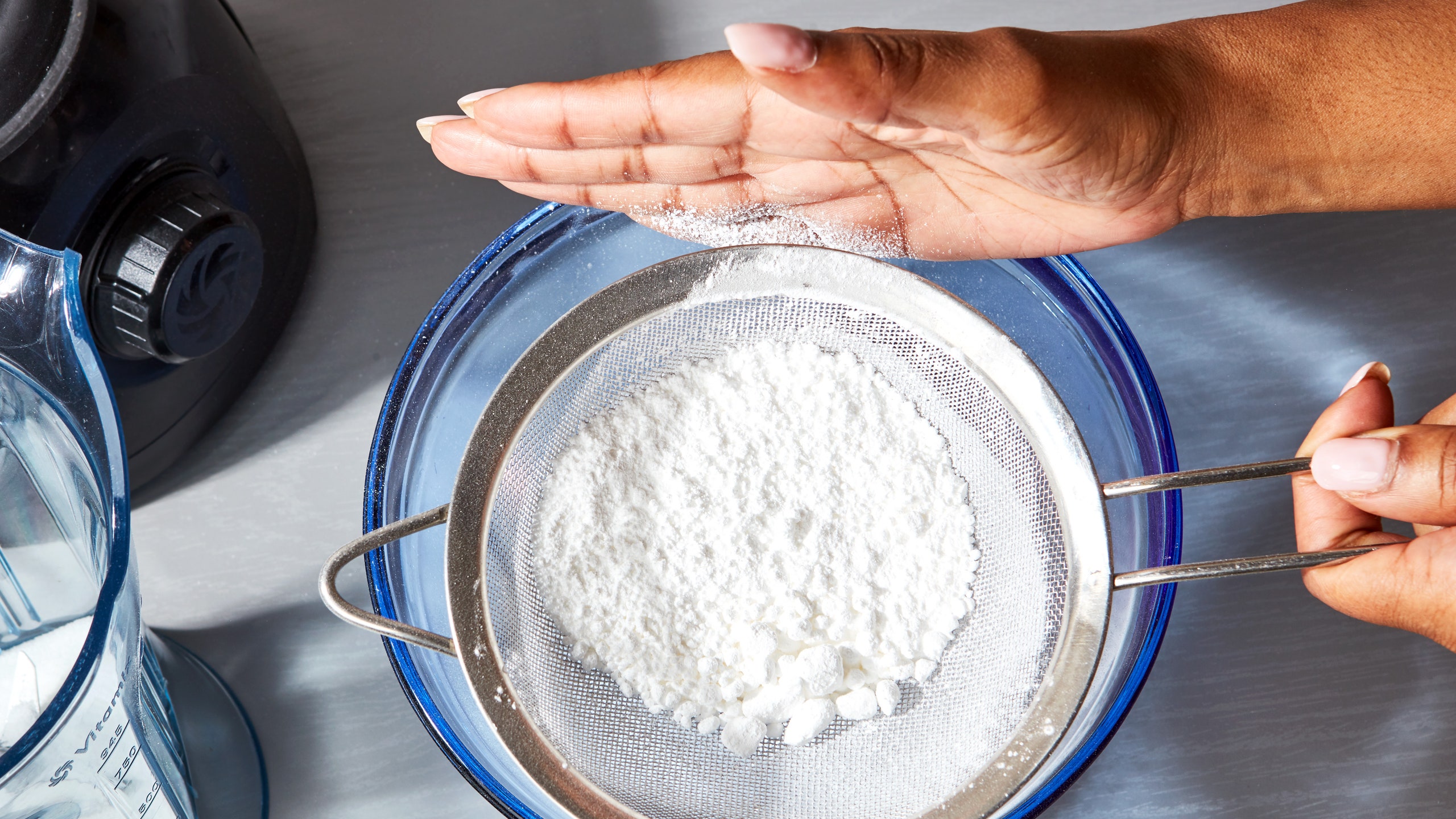









0 thoughts on “How To Store Powdered Sugar Long Term”